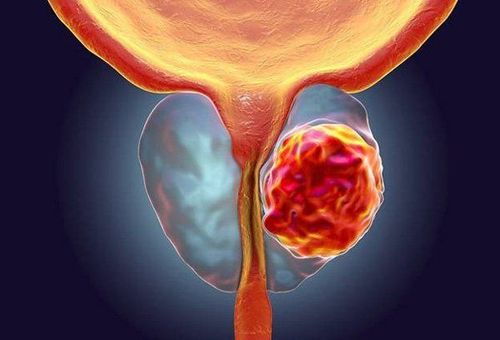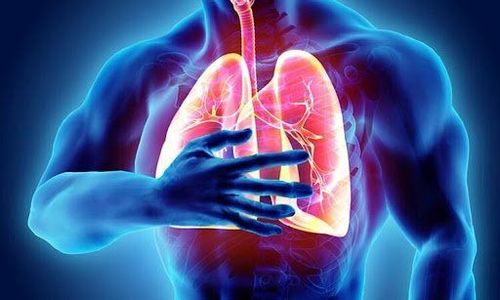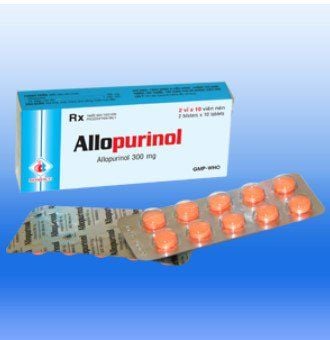This is an automatically translated article.
Nausea and vomiting are serious side effects of cancer chemotherapy that can have significant negative effects on patients' quality of life and their tolerance and adherence to treatment. Many medications or combinations of drugs are available to help prevent and control vomiting. They can also control feelings of nausea.
1. General
Nausea and vomiting are two serious and related side effects of cancer chemotherapy. These side effects can have significant negative effects on patients' quality of life and their ability to adhere to treatment. In addition, nausea and vomiting can lead to anorexia, decreased activity status, metabolic imbalance, wound sloughing, esophageal laceration, and nutritional deficiencies.
Despite advances in the prevention and management of chemotherapy-induced nausea and vomiting (CINV), these side effects remain some of the biggest concerns for patients. The use of emerging antiemetics has significantly reduced the incidence of vomiting, but reviews suggest that approximately 30% to 60% of patients still experience acute or later nausea after chemotherapy.
2. Pathophysiology
The vomiting response is centrally controlled by the vomiting center, located in the reticular formation of the brain stem. The emetic center receives input from three sources: the periphery, the cerebral cortex, and the chemoreceptor trigger region. The peripheral pathway is mediated mainly by serotonin (5-hydroxytryptamine3 [5-HT 3]) and neurokinin (NK). The cortical pathway, responsible for anterior vomiting, is mediated by dopamine and histamine. The chemoreceptor trigger zone, which is a collection of neurons at the base of the brain and exposed to the body's general circulation, mediates signals through all of the aforementioned chemokines. Once the vomiting center has been activated, signals are then sent to the salivary, vasomotor, respiratory and cranial centers to activate the organs involved in the vomiting reflex, the abdominal muscles. , diaphragm, stomach and esophagus.
3. Risk factors
Although most patients receiving chemotherapy are at risk for nausea and vomiting, onset, severity, agent, and duration vary. Tumor-related factors, treatments, and patients all contribute to prevention and control of nausea and vomiting (N&V), including tumor location, chemotherapy agents used, and exposure to radiation.
Patient-related factors may include:
Incidence and severity of N&V during previous courses of chemotherapy. Patients with poor control of N&V in previous cycles of chemotherapy are more likely to develop N&V in subsequent cycles. History of chronic alcohol use: Patients with a history of chronic heavy drinking are less likely to develop cisplatin-associated N&V. Aging: N&V is more likely to occur in patients younger than 50 years of age. Gender: N&V is more likely to occur in women. History of morning sickness or nausea during pregnancy. Additional causal factors may include the following:
Fluid and electrolyte imbalances, such as hypercalcemia, volume depletion or water intoxication. Tumor invasion or growth in the gastrointestinal tract, liver, or central nervous system, especially the posterior fossa. Constipation. Certain drugs such as opioids. Infection or sepsis. Increased urinary.
4. Classification of vomiting caused by chemotherapy
Vomiting has been classified as acute, delayed, predictive, disruptive, intractable, and chronic, as outlined below:
Acute vomiting: experienced in the first 24 hours after chemotherapy . Late vomiting: occurs more than 24 hours after chemotherapy. Delayed vomiting has been associated with cisplatin, cyclophosphamide, and other drugs (eg, doxorubicin and ifosfamide) given at high doses or for 2 or more consecutive days. Pre-vomiting: occurring before a new chemotherapy cycle in response to conditioned stimuli such as the smells, sights, and sounds of the treatment room Chronic vomiting in patients with advanced cancer: implicated in multiple etiologies latent resources. These etiologies are unknown and under-studied, but potential causative factors include gastrointestinal, cranial, metabolic, drug-induced (morphine), cytotoxic chemotherapy, and cytotoxic chemotherapy. mechanism of radiation.
5. Anti-nausea and vomiting drugs after chemotherapy
Antiemetics after chemotherapy are grouped according to how they work in the body for different forms of nausea and vomiting. It's important to remember that classes of drugs work differently. One medicine may not work for you as well as for another, depending on the type of nausea and vomiting you may have.
Serotonin (5-HT3) antagonists block the effects of serotonin, a substance that often causes nausea and vomiting. These drugs are effective in controlling acute nausea and vomiting and are usually given before chemotherapy and then several days after. (Example: Ondansetron, Granisetron, Dolasetron, Palonosetron)
NK-1 receptor antagonists block the action of the NK-1 receptor, a receptor that is part of the vomiting reflex. These medications provide slow relief of nausea and vomiting and are sometimes used to help relieve acute nausea and vomiting. They are often taken together with other anti-nausea medicines. (Example: Aprepitant, Rolapitant, Fosaprepitant)
Steroids are often given with other antiemetics to better prevent nausea and vomiting. They may be given before or after treatment. Sometimes steroids are not used for nausea and vomiting because their side effects can affect the patient's other health problems. (Example: Dexamethasone)
A dopamine antagonist that targets dopamine to help prevent it from binding to areas in the brain that cause nausea and vomiting. Many times these drugs are given when nausea and vomiting are not well controlled with other medicines. (Example: Prochlorperazine, Metoclopramide)
Benzodiazepine is sometimes called an anti-anxiety medication that can help with nausea and vomiting by reducing anxiety and helping the person feel calmer and more relaxed. These drugs may be more helpful in patients with nausea and vomiting prior to administration and are often used in combination with other anti-nausea medications. (Ex: Lorazepam, Alprazolam)
Cannabinoids contain the active ingredient in cannabis. These drugs can be used to treat nausea and vomiting caused by chemotherapy when conventional antiemetics don't work. They can also be used to stimulate appetite. Talk to your doctor about any side effects you may experience from using cannabinoids. (Example: Dronabinol, Nabilone)
Olanzapine is a newer medication used to treat nausea and vomiting. It has been shown to be helpful in reducing sudden and delayed nausea and vomiting. It is often an option for people who receive high-dose chemotherapy as part of a stem cell or bone marrow transplant. In studies, when used in combination with other anti-nausea and vomiting drugs, feelings of nausea were better controlled. It can make you drowsy, so talk to your doctor about the side effects you may experience while using olanzapine.
Combination anti-nausea drugs include multiple anti-nausea drugs in one dose. For example, you can combine a serotonin (5-HT3) antagonist with an NK-1 receptor antagonist. This combination is meant to help relieve acute and delayed nausea and vomiting.
6. How are anti-nausea and vomiting drugs used?
Antiemetics for cancer patients there are many ways to take anti-nausea and vomiting drugs. For example, you can use them:
Via IV (intravenously) Take by mouth as a pill or liquid that you swallow As a pill that melts under your tongue As a suppository Through an adhesive patch into your skin Your doctor will consider the following when deciding how best to give you antiemetics:
How likely is the cancer treatment to cause nausea and vomiting Nausea or vomiting how bad is yours The easiest way to get your medicine How quickly it will start working Your health insurance (many of these drugs are very expensive, especially in IV form) If these If the medicine used at first doesn't work, your doctor may switch you to another medicine or add a new one. Another option is to deliver the drug in a different way (by a different route). Taking medication by mouth is often the best, easiest, and cheapest way to prevent nausea and vomiting. But if you've been vomiting, or you can't swallow and hold things together, a different medication may be needed.
Tell your doctor if you still have problems despite treatment. Don't let nausea and vomiting make you feel bad and keep you from getting the nutrition your body needs during treatment. There's no reason for you to have uncontrollable nausea and vomiting. There are many medications that can be used to prevent and treat these side effects.
7. Treatment of nausea and vomiting caused by cancer drugs
Cancer-specific antiemetics are given and how often you take them based on their likelihood of causing nausea and vomiting. It's easier to stop nausea and vomiting than to stop it once it starts. No single drug can prevent or control 100% of treatment-induced nausea and vomiting. This is because treatments affect the body in different ways, and each person responds to chemotherapy and anti-nausea and vomiting medications differently.
To choose the best treatment plan for you, your doctor will:
Consider how likely your treatment is to cause nausea and vomiting View current studies and guidelines for your doctor which nausea is most effective for the treatment you are being treated for Select drugs based on cancer treatment known to affect the vomiting center in the brain Ask about your history of nausea and vomiting you Ask how well any anti-nausea medication has worked for you in the past Consider side effects of anti-nausea medications Prescribe the lowest effective dose of an anti-nausea medication before treatment Take these changes as needed to keep you from getting nausea and vomiting Anti-nausea and vomiting medications are usually taken on a regular schedule around the clock. Your doctor may encourage you to take them on schedule even if you don't have any nausea or vomiting. Sometimes, you can take your medication on an "as needed" schedule. This means that you take the medicine at the first sign of nausea to prevent it from getting worse. Ask your cancer care team how you should take these medicines:
Preventive medicine should be started before treatment. Medications should be continued during cancer treatment that is likely to cause vomiting, which can be different for different people based on the type of chemotherapy drug given. Each time you start a new cycle of chemotherapy, be sure to tell your cancer team what worked and didn't work the previous time.
Please dial HOTLINE for more information or register for an appointment HERE. Download MyVinmec app to make appointments faster and to manage your bookings easily.













